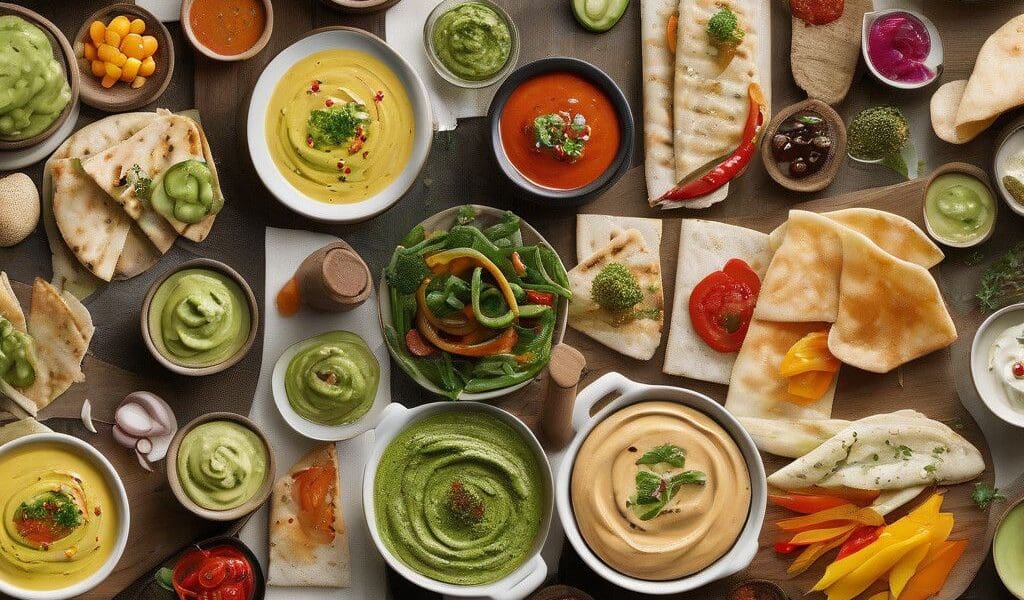In today’s culinary landscape, dips, sauces, and spreads have secured their place as essential elements in both casual snacking and elaborate meal preparation. With food prices having surged nearly 26% since November 2020, as reported by the U.S. Labor Department’s Bureau of Labor Statistics, consumers are increasingly gravitating towards versatile food products. Rather than wasting excess food, many now seek options that can be utilized in multiple contexts — a dip that complements crackers today may also enhance a sandwich or fried eggs tomorrow.
Robert Johnson, category manager at New Seasons Market in Portland, Oregon, points out that these products serve dual purposes: “Consumers benefit from the versatility of these types of products, which they can serve for both snacking occasions and to elevate a main dish.” The trend is not solely about flavor but extends into health-conscious territories as consumers seek natural, organic, and clean ingredient options. The demand for spicy formulations, Asian flavors, and plant-based alternatives has resonated particularly well with today’s shoppers, echoing a broader shift toward inclusivity for various dietary needs.
One prime example of this versatility can be found in avocado-based products. Avocados have transformed the way people approach dips and spreads. For instance, Good Foods Group’s Avocado Mash, crafted from just Hass avocados, black pepper, sea salt, and lemon juice, highlights how a simple ingredient can serve numerous culinary needs. According to Shannon Maher, the company’s chief growth officer, this mash is not just a fulfilling dip for gatherings but also an ideal inclusion for meal prep and school lunches.
The Rise of Plant-Based and Allergen-Free Options
Amidst the growing focus on health and wellness, brands are proactively targeting the increasing number of flexitarians—individuals who eat mainly plant-based foods but still consume meat and dairy in moderation. Maher notes that consumers want more plant-based options in their diets without having to commit strictly to veganism. This trend is reflected in the flavor profiles of many brands adjusting their recipes to provide a balance of dairy and plant-based ingredients.
Additionally, allergen-free options are becoming increasingly important. In today’s market, brands like Castello Cheese highlight versatility by marketing their whipped dips, which serve both as sauces for cooked noodles and as spreads. Kaitlin Sautner, senior commercialization manager at Castello, asserts that these products meet consumer demand for affordable versatility. “Consumers are money conscious. People want more bang for their buck,” she explains.
Advent of Hot and Spicy Trends
The American palate is evolving, with trends showing an increasing acceptance of spiciness and flavorful heat in everyday cooking. As noted by Chef Suhan Lee at Get Saucy, the demand for vibrant flavors influences shopping behavior. “People are ready to have more fun with food but expect more from it.” This shift is evident in trending products like Truff’s hot sauces, which add a sharp, spicy twist to traditional condiments. Joseph DeCicco Jr., a partner at DeCicco & Sons, mentions that these sauces, including products like Truffle Hot Sauce and Green Hot Sauce, are replacing classic sauces such as ketchup and mayonnaise in many households.
The introduction of innovative products offering sweet and spicy combinations also reflects current consumer preferences. Cedar Mediterranean Foods’ Topped Organic Hot Honey Hummus is a perfect illustration of this trend. Combining the sweetness of honey with the kick of chili, it balances both flavors beautifully, providing a unique culinary experience that appeals to contemporary taste buds.
As Asian flavors continue to gain traction, products like Bachan’s Japanese Dipping Sauce are also making waves. Made with traditional ingredients like stone-ground sesame paste and real ginger, these sauces offer a burst of umami that can elevate a multitude of dishes from summer rolls to burgers. Justin Gill, founder of Bachan’s, emphasizes the versatility of his products, noting that they can be integrated into diverse meals beyond the stereotype of dipping sauces.
Value-Added Approaches
The versatility of dips, sauces, and spreads goes beyond mere flavor. Brands are also prioritizing value, ensuring their products deliver more than one intended purpose. Bonne Maman has recently expanded its line to include hazelnut and peanut chocolate spreads, understanding that consumers can use these sweet delights in various ways—from breakfast toppings to standalone snacks. This multipurpose approach not only captures market share but also aligns with consumer desires for tasty and functional food products.
In contrast, Get Saucy is focusing on flavor for individuals with dietary restrictions, particularly for people with autoimmune conditions like Crohn’s disease. Lee remarks that those affected often contend with bland and limited diets, yet still desire flavorful meals. By crafting sauces that accommodate specific dietary needs, the brand targets a niche audience while promoting overall inclusivity in the market.
As consumers continue to place importance on versatility and value, the market for dips, sauces, and spreads seems poised for ongoing growth. Brands that successfully innovate and deliver on these fronts will not only capture consumer interest but will also redefine the role of these staple products in meal preparation and enjoying everyday culinary experiences.
Versatile options encourage waste reduction and efficient use of ingredients, making them appealing for consumers looking to maximize their grocery budgets. This trend will likely fuel further creativity in flavor profiles and product formulations, underscoring the significant opportunity that lies in the realm of dips, sauces, and spreads.










